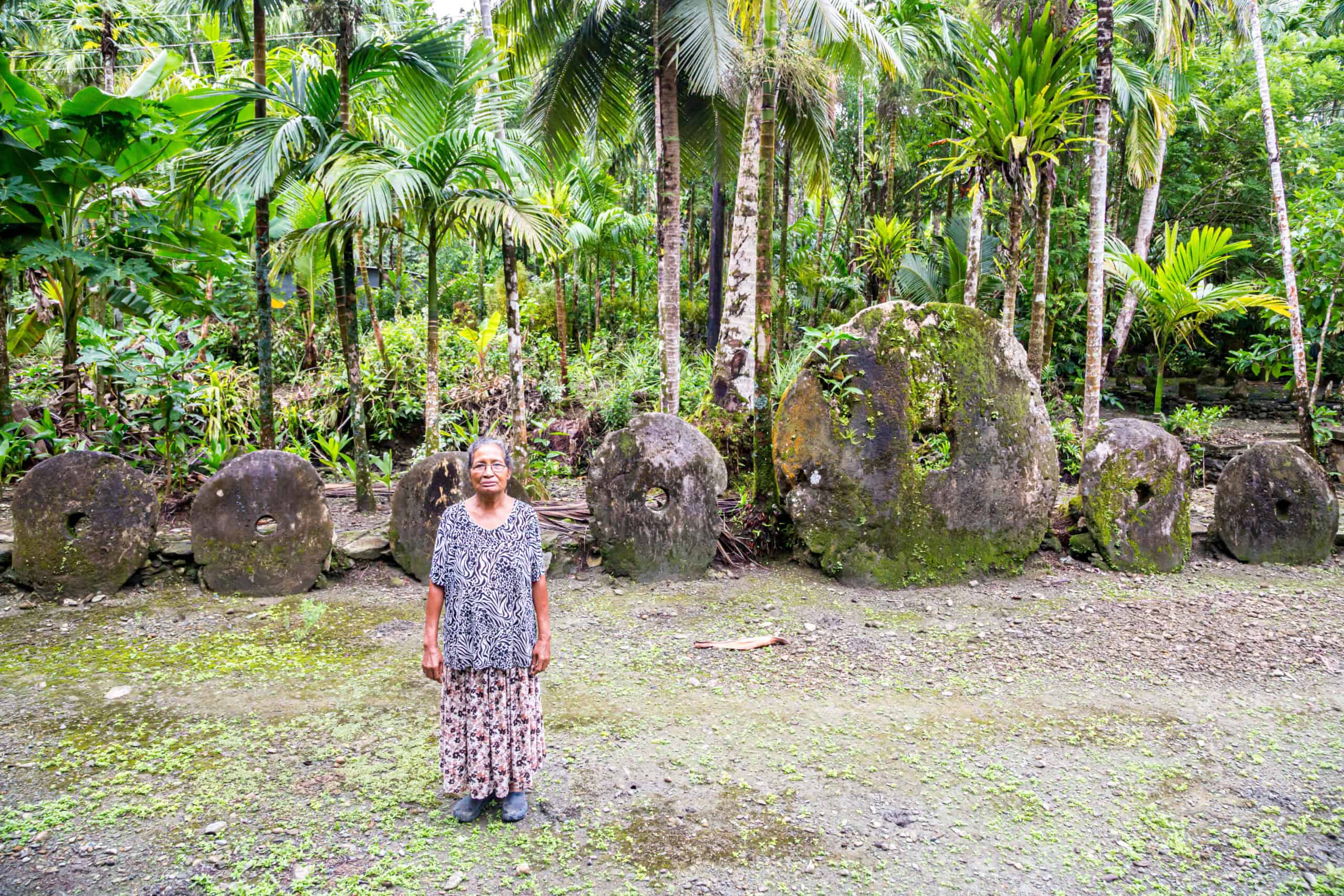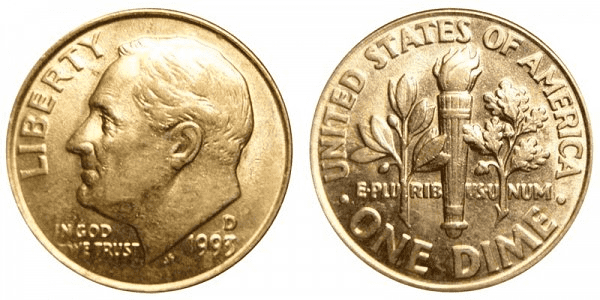Throughout history, different cultures have used a fascinating variety of items as currency. These unique forms of money reflect the diverse ways societies have valued and exchanged goods. From massive stones to intricate shells, these currencies tell stories of trade, culture, and innovation.
Rai Stones (Yap Island)

Rai stones are massive limestone disks used as currency on the island of Yap in Micronesia. These stones range in size from a few inches to over 12 feet in diameter. Transporting them was a significant effort, often involving entire villages and lengthy journeys across the sea. The value of a rai stone depends on its size, history, and craftsmanship. What makes rai stones unique is that they rarely change physical location once acquired. Ownership transfers through verbal agreements witnessed by the community. The stone’s history, such as who transported it and any notable events associated with it, adds to its value.
Feather Money (Santa Cruz Islands)

Feather money from the Santa Cruz Islands in the Solomon Islands is an extraordinary example of currency made from natural materials. These currencies are long coils of tiny red feathers carefully woven together. The feathers come from small scarlet honeyeater birds, and creating these coils requires intricate craftsmanship. The unusual aspect of feather money lies in its beautiful and delicate construction. It served not only as a medium of exchange but also as a symbol of wealth and social status. Feather money was used primarily in the 19th and early 20th centuries, and its production involved extensive labor and skill, making it a highly valued commodity.
Cowrie Shells (Africa, Asia, Oceania)

Cowrie shells have been used as currency in various regions, including Africa, Asia, and Oceania. These small, shiny shells were highly prized for their durability and uniform size. They were easy to count and transport, making them ideal for trade. Cowrie shells’ unusual aspect is their wide geographical usage and significance in different cultures. They were often strung together or used in large quantities for significant transactions. Cowrie shells have been in use for over a millennium, playing a crucial role in trade networks across continents. They symbolize wealth and were often used in ceremonial exchanges and dowries.
Manilla (West Africa)

Manillas are bronze or copper bracelets used as a form of currency in West Africa. These ring-shaped objects were produced in various sizes and weights, often with flared ends. They were primarily used for trade and dowries. The unusual aspect of manillas is their dual function as both currency and jewelry. They were worn as adornments and exchanged in significant economic transactions. Manillas were introduced by European traders during the transatlantic slave trade and remained in use until the 20th century.
Knife Money (Ancient China)

Knife money, used in ancient China, consists of bronze or copper pieces shaped like knives. These currencies date back to the Zhou dynasty around 600 BCE. The knives have inscriptions indicating their place of origin and value. The unusual aspect of knife money is its distinctive shape and inscriptions. Unlike traditional round coins, knife money represents a practical tool, highlighting the early stages of currency development. They were used in trade and often buried with the dead as grave goods.
Katanga Cross (Central Africa)

Katanga crosses are large, X-shaped ingots of copper used as currency in Central Africa. They were primarily used in the Katanga region of what is now the Democratic Republic of Congo. These crosses typically weigh between one and two kilograms and were used in trade, dowries, and as symbols of wealth. The unusual aspect of Katanga crosses is their distinct shape and substantial weight. They served as both a medium of exchange and a store of value, similar to how gold bars are used today. Katanga crosses were in use from the 13th to the 19th century, reflecting the region’s rich copper resources and metallurgical expertise.
Tea Bricks (Asia)

Tea bricks were a form of currency used in parts of Asia, particularly China, Mongolia, and Tibet. These bricks were made by compressing tea leaves into solid blocks, making them easy to transport and store. Used primarily from the Tang Dynasty through the early 20th century. They were highly valued not only for their utility as a drink but also as a medium of exchange. People could break off pieces of the brick to brew tea, or use it in transactions. It was especially valuable in regions where tea was scarce. The value of tea bricks often fluctuated based on the quality of the tea and the current market demand.
Glass Beads (Africa, Americas)

Glass beads served as currency in various parts of Africa and the Americas. These beads, often brightly colored and intricately designed, were used in trade and adorned as jewelry. They became prominent during the period of European exploration and colonization, roughly from the 16th to the 19th centuries. They held significant cultural value and were often used in rituals and ceremonies. Their value varied widely depending on their color, size, and origin, making them a fascinating example of a non-metallic currency.
Rhubarb Sticks (Russia)

In 18th-century Russia, rhubarb sticks were sometimes used as a form of currency. Rhubarb, particularly the medicinal variety, was highly valued for its purported health benefits. The Russians traded these sticks primarily with the Chinese, who considered rhubarb an essential commodity. Unlike more durable forms of money, rhubarb had a limited shelf life, which made it a unique and somewhat impractical medium of exchange. Despite this, it held significant worth in the trade networks between Russia and China.
Gold Dust (West Africa)

In West Africa, gold dust was a common form of currency. It was particularly prevalent in regions such as Ghana, where gold was abundant. Traders carried small scales and measures to weigh the dust, ensuring accurate transactions. This practice dates back to at least the 14th century and continued into the colonial period. Unlike minted coins, gold dust could easily be lost or mismeasured, necessitating careful storage and transport. Despite these challenges, it facilitated extensive trade networks across West Africa and beyond.
Bark Cloth Money (Uganda)

In Uganda, bark cloth was historically used as currency. This cloth, made from the bark of the fig tree, was not only a medium of exchange but also held cultural significance. It was used in clothing, ceremonial attire, and as a form of tribute to leaders. Its use as currency dates back centuries and continued into the colonial era. Creating bark cloth involved labor-intensive techniques, making it a valuable commodity. Its cultural importance added to its worth, as it was integral to various social and religious practices in Ugandan society.
Squirrel Pelts (Medieval Russia)

Squirrel pelts were a common form of currency in medieval Russia. This practice dates back to the 9th century, lasting until the 13th century. The pelts were valued for their warmth and durability, making them highly desirable. They were often used in trade, especially in regions where more conventional forms of money were scarce. Medieval Russians traded pelts for goods such as grain and tools. The use of squirrel pelts as money underscores the reliance on natural resources for economic stability. The pelts’ value varied depending on their quality and the season, with winter pelts being the most prized due to their thicker fur.
Wampum (Native America)

Native American tribes, particularly in the northeastern United States, used wampum as a form of currency. Wampum consisted of beads made from shells, specifically the white shells of the whelk and the purple or black shells of the quahog clam. The intricate crafting of these beads into belts and strings was a skilled art, and the finished products were used for trade and ceremonial purposes. European settlers later adopted wampum as currency in trade with Native Americans. The exchange rate was standardized to facilitate commerce, but wampum retained its traditional importance within Native communities.
Bottle Caps (West Africa)

Bottle caps became an unconventional currency in certain parts of West Africa. This phenomenon started in the mid-20th century, when local economies faced shortages of official coinage. Bottle caps, particularly from soda and beer bottles, were readily available and easily recognizable. Communities used bottle caps for small transactions and barter. The caps’ bright colors and brand logos added a unique visual element to the currency system. This practice demonstrated how everyday objects could gain economic significance in times of need.
Cow’s Milk (Ancient Greece)

In ancient Greece, cow’s milk served as a medium of exchange in certain rural communities. This form of currency highlights the agrarian nature of these societies. Farmers and herders traded milk for goods and services, relying on its consistent demand and perishability. The use of milk as currency underscores the importance of livestock in ancient Greek economies. Milk’s value was determined by its freshness and quality, making it a dynamic and practical form of trade. This practice persisted in areas where traditional coinage was less accessible, reflecting the adaptability of these communities.
This article originally appeared on Rarest.org.
More from Rarest.org
1944 Wheat Penny Value Guide

Are you a numismatist or coin trader? If yes, you should look at the 1944 Lincoln Wheat penny. A 1944 Lincoln Wheat Penny is an antique coin worth more than its face value. Read More.
1944 Jefferson Nickel Value Guide

The Jefferson nickel has been the five-cent coin the United States Mint issued since 1938 when it replaced the Buffalo nickel. Although the Buffalo nickel looked amazing, it was difficult to mint. Read More.
1993 Roosevelt Dime Value Guide

The production of the 1993 10-cent coin is part of the Roosevelt dime series, first issued in 1946. Since then, the Roosevelt dime became popular among Americans, one of the most widely used coins today. Read More.
